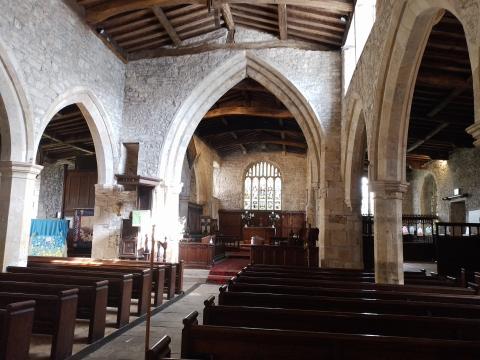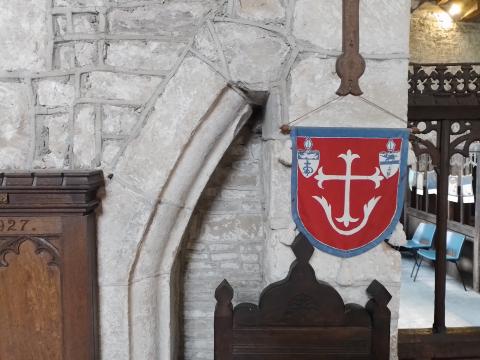Grinton Church: Pope vs Archdeacon

St Andrew’s Church in Grinton in Swaledale is a fine old building, and it was built on a surprisingly large scale, justifying its nickname of ‘Cathedral of the Dales’. It has a number of interesting features but is not otherwise different from any other large and ancient parish church in English arcadia. Yet an event which took place here back in the twelfth century was discussed by the Pope of Rome, and a Church Council created new canon law to address the matter. It seems strange that so remote and obscure a church should warrant the attention of such powerful figures as Pope Alexander and the Third Lateran Council.

The prior and canons of Bridlington controlled Grinton Church, which means they appointed the Vicar and received some of the tithes from the parish. Some time in the 1170s, the Archdeacon of Richmond came on Visitation (to inspect the church) on behalf of the Archbishop of York in whose diocese it was. The parish coffers were expected to feed and accommodate the Archdeacon and his assistants, but this venerable dignitary arrived with an escort of ninety-six, along with twenty-one dogs and three hawks. The canons complained that the cost of feeding the horses, the dogs and the ninety-six retainers, as well as the good archdeacon himself, was excessive for 'hora brevi', this one brief tour; the Mother House could have been supported by this quantity of victual for a lengthy period. The Archdeacon, who may have been one Bartholomew who held the office from 1157, clearly enjoyed travelling in style, and did not allow his ecclesiastical duties to interfere with his love of sport.
The Bishop of Rome, despite his own taste for extravagant displays of grandeur agreed with the Prior, and the Third Lateran Council legislated against any repetition. To this day, the Vatican shares on its website the resulting limits of the size of escorts and retinues accompanying higher clergy when they visit the parishes:
Therefore we decree that archbishops on their visitations of their dioceses are not to bring with them more than forty or fifty horses or other mounts, according to the differences of dioceses and ecclesiastical resources; cardinals should not exceed twenty or twenty-five, bishops are never to exceed twenty or thirty, archdeacons five or seven, and deans, as their delegates, should be satisfied with two horses. Nor should they set out with hunting dogs and birds, but they should proceed in such a way that they are seen to be seeking not their own but the things of Jesus Christ. Let them not seek rich banquets but let them receive with thanksgiving what is duly and suitably provided
That Archdeacon Bartholomew had access to such a large number of servants highlights the large gap between the apostolic church and its corrupted, medieval successor. Although the papacy and cardinals sought to limit this excess, they did little about their own opulence nor the wider issue of a wealthy, powerful Church living off others’ backs.

- Log in to post comments


 Sunday Worship 10.45am & 6.00pm
Sunday Worship 10.45am & 6.00pm